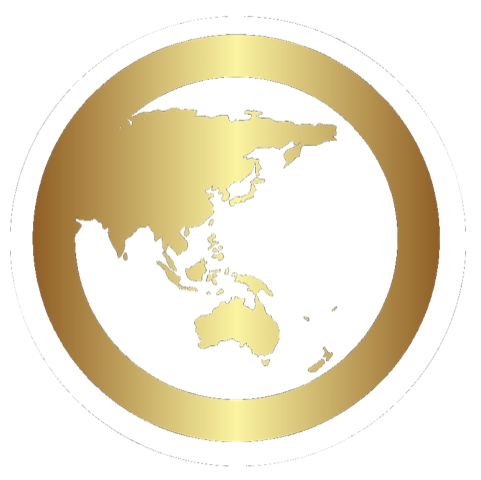Opportunities in the US
The US is the largest economy in the world. At present, the US is Australia’s third largest trading partner, with an annual growth rate of 3.9% over the past 5 years.
For Australian businesses, the size of the US market, the use of English, a mature business environment, as well as the Australia-United States Free Trade Agreement (AUSFTA) all make the US a favourable market to enter into.
The Silicon Valley, in particular, provides enormous opportunities for start-ups in the innovation sector. For this reason, the Australian Trade and Investment Commission (‘Austrade’) has set up a landing pad in San Francisco, providing businesses with a ninety-day residency as well as after-program support.[1]
Why Register Your Trade Mark in the United States?
Compared with other countries, the US offers substantially more protection to unregistered trademarks. “Common law” rights are attainable based solely on use of the mark in commerce, without any form of registration. However, these rights exist only within the specified area of registration and use. On the other hand, registration provides significantly more protection than common law rights alone.
There are two tiers of trade mark registrations in the US: State and Federal. Put it simply, State registration provides rights within the borders of that State. Registration with the United States Patent and Trade Mark Office (USPTO), however, gives you the exclusive right to use the mark nationwide in conjunction with the registered goods or services.
Most important of all, registration of your mark generates public notice of your ownership. Your competitors will not be able to use your mark or anything remotely similar to it. The public nature of the notice means competitors cannot claim ignorance of your registered trade mark and the rights and protections associate with it.
Registration at the federal level also gives you the right to bring actions against infringing parties in the federal courts and/or defend your rights of use if another party claims you have infringed their mark. Furthermore, if you are looking to register your mark elsewhere in the world, registration in numerous jurisdictions is extremely helpful when claiming rights elsewhere.
Finally, if your trade mark relates to the provision of goods, registration affords you the right to record USPTO’s registration with the U.S. Customs and Border Protection, thus preventing the importation of any foreign goods that could infringe upon your Federal registration rights.
Given the wide protections given to trade marks registered at the federal level, our advice is that you should apply for one as soon as you intend to use your trade mark in the US. This will ensure your trade mark is protected nationwide and the chance of registration being opposed on the basis of first use will be significantly limited.
First-to-Use Principle
It is important to understand that trade mark rights in the US operate on a ‘first-to-use’ not ‘first-to-file’ basis. This means that it is not registration but actual use of a trade mark in commerce that generates rights and priority over others. As such, an application for a trade mark that resembles an unregistered trademark which had been used prior in time would be refused if it causes confusion, mistake, or deception.
Furthermore, unlike other countries, trade mark registration in the US depends on use; either existing use in commerce, or a bona fide (‘good faith’) intention to use the mark in commerce. Hence, it is not possible to pre-empt trade mark rights in the US.
Dilution by Blurring/ Tarnishment
In addition to confusion, some jurisdictions also confer reputable marks protection against dilution. This means that reputable marks are protecting from use of marks which would erode the distinctiveness or tarnish their reputation.
The law in Australia does not recognise dilution. The EU, on the other hand, recognises three types of dilution: blurring, tarnishment, and unfair advantage. In the US, there are two forms of dilution under Federal Law for “famous marks”: blurring and tarnishment. Some trade marks that have been held to be famous includes Starbucks, Nike and Audi.
As such, prospective applicants need to be aware that, even though your trade mark was accepted by the Australian authority, it may nevertheless be rejected in the US for similarity with a reputable mark.
How to Apply for a Trade Mark in the United States?
You can register your trade mark with the USPTO directly though their website: https://www.uspto.gov/trademarks-application-process/filing-online. The process is relatively straight-forward. There are THREE application forms to choose from ranging from $225-$400. The only difference in the applications is the amount of information that is required in addition to the online form. Simply put, the more you pay, the less you have to provide. The website is extremely user-friendly, offering ‘how to’ videos which makes the decision-making process simple and effective.
The application itself consists of an online form requiring information about you and your mark. The more evidence of use or prior registration in other jurisdictions you can provide the better.
You will be required to list the goods and/or services your trade mark refers to from the standard list of 45 Classes. Trade mark examiners in the United States require descriptions to be extremely specific unlike other countries. If an application does not provide sufficient description of the goods and services of which you are seeking to protect it is likely your application will be refused.
When filing a trade mark in with the USPTO you may represent yourself or chose to hire a trade mark attorney to conduct the legal proceeding for you. Choosing to file the mark yourself will not negatively impact your chances of successful registration.
Trade mark applications for the US can also be made through the World Intellectual Property Organization (WIPO) if the mark has already been registered in another country. This avenue allows you to seek registration for the mark in additional countries in the same application. This process is comparatively expensive to the single federal registration for the US, costing a basic fee of 653 Swiss Francs (US $655), plus the individual fees for each country designated on the application. For the US, this is CHF 388.
Our advice is that the WIPO option should only be used if you are looking to register your trade mark in many countries. For protection within the US only, it is undoubtedly more cost effective and time efficient to apply through the USPTO.
How to Maintain Registration of Your Mark
Once your mark has been registered through USPTO, your trade mark would be valid for 10 years. Trade mark holders are nevertheless required to file specific registration maintenance documents and pay regular fees between the 5th and 6th year from registration in order to keep the registration active. It is very important that these deadlines are met to ensure your registration does not expire or get cancelled. In the event that deadlines are not met, you can only regain trade mark protection by filing another complete application.
Before the end of the first 6-year period of your registration, you are required to file a “Declaration of Use” or “Excusable Non-Use”. Depending on the circumstances, you would either have to declare that your mark is being used in commerce, or provide reasons as to the special circumstances that excuse the mark from not being in use and that there is no intention to abandon your mark.
Renewal of your mark is required before the end of every 10-year period from the date of registration. Again, a “Declaration of Use” or “Excusable Non-Use” must be provided along with the Application for Renewal.
Statutory Filing Fee US$275.00 per class.
The US is a dynamic country offering extensive opportunities for businesses to develop and expand. It is imperative that your trademarks are secure in the US market as soon as you consider operating within it. Registering and maintaining your intellectual property is key to nationwide success.
DO IT YOURSELF v. EXPERT WORK
Should you need strategic advice or require assistance with drafting your list of goods and service, so its wording is accepted by the USPTO or require a similarity search before you submit an application to avoid refusal of your application, please visit our website
www.one-ip.com.au
or send us an email to
office@one-ip.com.au.
ONE IP INTERNATIONAL can help with trade mark applications in any country for an affordable fixed fee.
[1] Australian Government, Land in the Bay: The Australian Entrepreneur’s Guide to the San Francisco Bay Area


